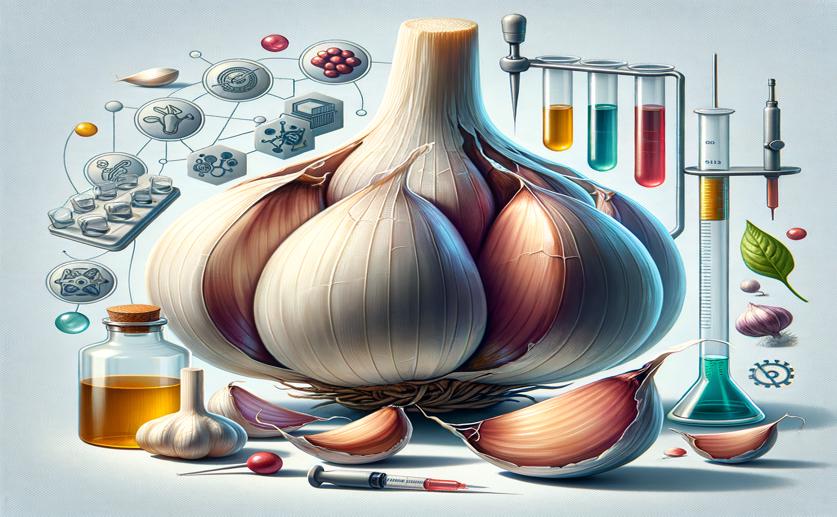
Perfecting Garlic Extraction for Best Health Benefits and Chemical Analysis
Jenn Hoskins
28th August, 2024

Image Source: Natural Science News, 2024
Key Findings
- Researchers at the University of Sargodha optimized the extraction of bioactive compounds from a new garlic cultivar, NARC-G1
- The optimal extraction conditions were 23 minutes, 60°C, and a 39:1 solvent-to-solid ratio
- The garlic extract showed high antioxidant, antihyperglycemic, and antimicrobial activities, with significant inhibition of α-amylase and α-glucosidase
References
Main Study
1) Optimization of Extraction Conditions for Biological Attributes of Newly Developed NARC-G1 Garlic Using Response Surface Methodology and Its GC-MS Characterization.
Published 27th August, 2024
https://doi.org/10.1002/cbdv.202401013
Related Studies
2) Health Benefits of Culinary Herbs and Spices.
3) Bioactive Compounds and Biological Functions of Garlic (Allium sativum L.).
4) Effects of garlic polysaccharide on alcoholic liver fibrosis and intestinal microflora in mice.
5) Tissue-Specific Accumulation of Sulfur Compounds and Saponins in Different Parts of Garlic Cloves from Purple and White Ecotypes.



 22nd August, 2024 | Jenn Hoskins
22nd August, 2024 | Jenn Hoskins